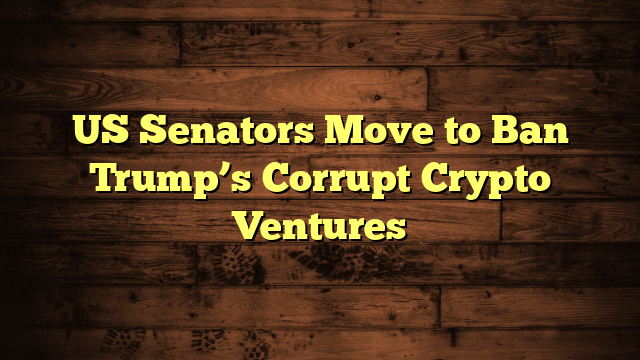Crypto Market Structure Uncertain After Derailed House Hearing
Uncertainty Reigns as Crypto Legislation Stalls
The future of digital assets in the United States remains unclear after a much-anticipated House Financial Services Committee hearing on cryptocurrency regulation was abruptly derailed. The April 2025 session, which was expected to address key aspects of the burgeoning crypto market structure, ended in disarray without any conclusive direction, leaving both lawmakers and market participants scrambling for clarity.
As the clock ticks on regulatory certainty, stakeholders in the crypto industry are left with critical questions: What will define a security versus a commodity in the digital age? Will there be clear jurisdictional lines between the Securities and Exchange Commission (SEC) and the Commodity Futures Trading Commission (CFTC)? And perhaps most importantly, can Washington establish a framework that supports both innovation and investor protection?
The Hearing That Could’ve Shaped Crypto’s Future
Convened by the House Financial Services Committee’s Subcommittee on Digital Assets, Financial Technology and Inclusion, the hearing was expected to press forward with several key regulatory proposals. These initiatives are fundamental to creating consistent rules that govern how cryptocurrencies and digital asset platforms operate.
However, political tensions and procedural gridlock torpedoed the agenda. Testimony from witnesses—including legal scholars, blockchain experts, and policy advocates—was cut short or never heard. As lawmakers clashed over priorities, the hearing failed to make significant headway.
The fallout? Another missed opportunity to move toward comprehensive cryptocurrency regulation in the U.S.
Why Market Structure Matters
The term “market structure” in crypto refers to the rules and institutions that allow cryptocurrencies to be issued, traded, and monitored. For the industry to mature, market participants heavily depend on regulatory frameworks that offer:
- Clear definitions that distinguish between digital commodities and digital securities
- Transparent compliance rules that exchanges and brokers must follow
- Consumer protection mechanisms that protect investors from fraud and manipulation
With the hearing derailed, tension grows in an already volatile space. Without a legislative roadmap, startups and investors face increasing uncertainty amid fears of regulatory overreach or inaction.
Dueling Agencies: SEC vs. CFTC
One of the biggest policy questions left unanswered is the jurisdictional battle between the SEC and CFTC. Both agencies are staking claims on portions of the crypto ecosystem, and without congressional mediation, this turf war continues to breed confusion.
The SEC argues that many crypto tokens qualify as securities under the Howey Test and therefore fall under their purview. Meanwhile, the CFTC maintains that crypto commodities—like Bitcoin and Ether—should be regulated under commodity trading laws.
Although overlapping responsibilities aren’t unusual among federal regulators, the lack of a legislative framework exacerbates industry paralysis. Various bills in Congress aim to clarify these roles, but none have yet received bipartisan support or a full vote.
Industry Impact: Stuck in Regulatory Limbo
This stalemate has created significant operational risk in the crypto ecosystem. Startups and established firms alike are left to guess how they should register their tokens or structure their platforms.
Key consequences of the uncertain market structure include:
- Delayed innovation: Developers and entrepreneurs are wary of launching new products that might attract unwanted scrutiny.
- Capital exits: Investors are slowing or withdrawing funds from U.S. crypto initiatives, opting for jurisdictions with clearer rules like the EU or UAE.
- Compliance confusion: Exchanges are unsure whether to register with the SEC, the CFTC, both—or neither—leading to legal gray areas.
Global Competitors Gain Ground
While U.S. lawmakers stall, other global regions are rapidly advancing their crypto regulations. The European Union has already implemented its Markets in Crypto-Assets (MiCA) regulation, offering clear compliance guidelines across member states. Similarly, countries in Asia and the Middle East have enacted legislation designed to both attract investment and mitigate risk.
This international momentum puts the U.S. at risk of falling behind in the race to define the future of finance.
The Innovation Exodus
As more American crypto firms weigh relocating overseas, concerns mount over a potential “brain drain” of developers, entrepreneurs, and fintech capital. If the U.S. fails to establish a comprehensive market structure soon, it may permanently lose its edge in the digital economy.
What’s Next for Crypto Regulations?
Despite the frustrating lack of progress, advocates remain cautiously optimistic that change is on the horizon. Multiple bipartisan bills, including the Financial Innovation and Technology for the 21st Century Act, still hover in Congress and are expected to be reintroduced or revised later this year.
Some lawmakers also propose forming a digital asset-specific regulatory agency to end the current alphabet-soup of conflicting jurisdiction. Such an agency, proponents argue, could help harmonize oversight and foster collaboration between traditional finance and Web3 innovators.
Until then, regulatory uncertainty is the only constant.
Staying Compliant in an Ambiguous Environment
While the wait continues, legal experts advise crypto businesses to take proactive steps to ensure compliance wherever possible:
- Work with legal counsel to analyze token classifications and SEC disclosures
- Implement robust KYC/AML procedures to meet global standards even without federal U.S. mandates
- Engage with policymakers through trade associations and public comment periods
Conclusion: A Crossroads for Crypto Policy
The derailed House hearing has underscored just how fragile and divided U.S. policy on crypto remains. At a time when other nations are forging ahead with digital finance, the United States finds itself stuck in a cycle of stalled discussions and political distractions.
The crypto market awaits clear answers—on definitions, on jurisdictions, and on how to build the infrastructure of tomorrow’s economy with the oversight of today’s institutions.
Until those answers are delivered, one thing is certain: the future of the U.S. crypto market structure hangs in the balance.




